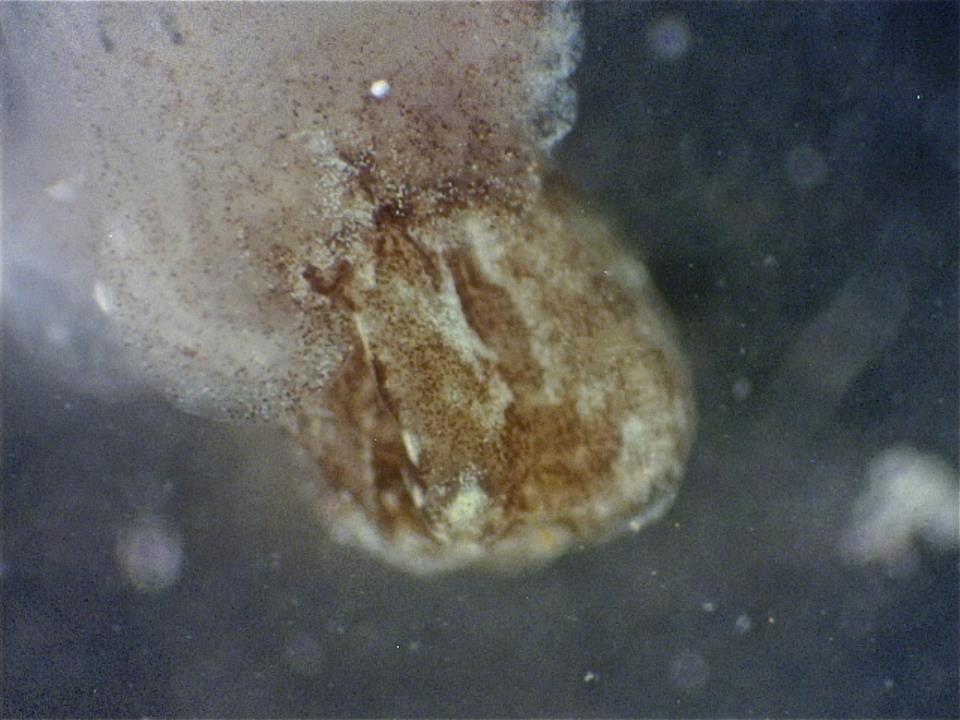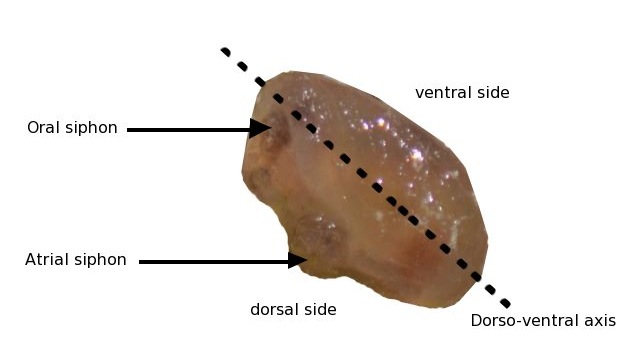External Morphology
Tunic
A. glabra tunic surrounds the whole animal. It is firm (cellulose-like substance) and contains occasional papillae and adhering hairs, probably used by individuals to stick to one another, on its surface (Brien et al., 1948; Kott, 1985). The surface of the tunic can occasionally be slightly granulated on large individuals but, in general, it is smooth (Kott, 1985). As A. glabra is usually fixed to the substrata on the left side of its body, the tunic is usually thinner on the left side (Brien et al., 1948; Kott, 1985).
Siphons
 Photo by Emmanuelle Zoccola
Photo by Emmanuelle Zoccola

Position of the siphons on A. glabra (attached on the left side of its body)
Picture of A. glabra by Arnault Gauthier, modification by Emmanuelle Zoccola |